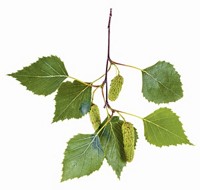Advertisement
Grab your lab coat. Let's get started
Welcome!
Welcome!
Create an account below to get 6 C&EN articles per month, receive newsletters and more - all free.
It seems this is your first time logging in online. Please enter the following information to continue.
As an ACS member you automatically get access to this site. All we need is few more details to create your reading experience.
Not you? Sign in with a different account.
Not you? Sign in with a different account.
ERROR 1
ERROR 1
ERROR 2
ERROR 2
ERROR 2
ERROR 2
ERROR 2
Password and Confirm password must match.
If you have an ACS member number, please enter it here so we can link this account to your membership. (optional)
ERROR 2
ACS values your privacy. By submitting your information, you are gaining access to C&EN and subscribing to our weekly newsletter. We use the information you provide to make your reading experience better, and we will never sell your data to third party members.
Environment
Nanomaterials Bug Fruit Flies
Carbon nanomaterials don't seem to harm larvae, but glom onto adults and impair their mobility, leading to early mortality
by Laura Cassiday
August 17, 2009
| A version of this story appeared in
Volume 87, Issue 33

Carbon nanomaterials hold great promise for applications ranging from electronics to medicine. But their environmental impact is still being determined, with most toxicological studies conducted so far on cultured cells rather than on intact organisms. That’s why Xinyuan Liu, Robert H. Hurt, David M. Rand, and coworkers of Brown University studied the effects of carbon nanomaterial exposure on fruit fly larvae and adults (Environ. Sci. Technol., DOI: 10.1021/es901079z). The researchers found that when larvae ingested various types of carbon nanomaterials, there was, surprisingly, no impact on development or survival, although some nanomaterials accumulated in tissues. In contrast, exposing adult flies to dry powders of some carbon nanomaterials impaired their mobility and caused them to die within hours. Nanomaterials that form small aggregates, such as carbon black and single-walled nanotubes, were more toxic to the flies than nanomaterials with larger aggregate sizes, they noted, probably because the small aggregates strongly adhere to the flies’ eyes, legs, wings, and breathing holes. In a test-tube assay, flies were observed spreading attached nanomaterials to uncontaminated flies while grooming themselves, which suggests that insects could transport carbon nanomaterials from manufacturing or waste sites.



Join the conversation
Contact the reporter
Submit a Letter to the Editor for publication
Engage with us on Twitter